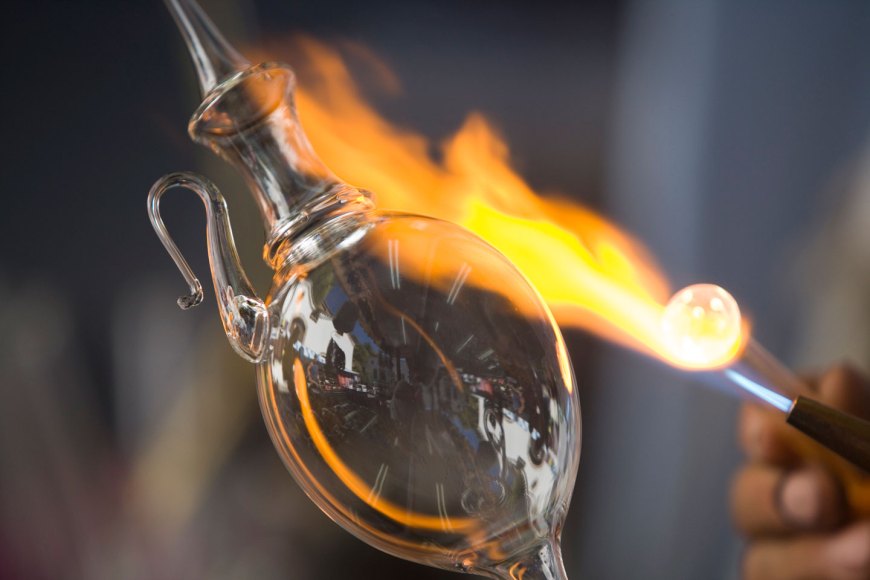Let’s learn about glass
Glass is one weird material — firm like other solids, but with a chaotic atomic structure similar to liquids

When heated to high temperatures, glass becomes malleable enough to shape in a wide variety of ways.
Holger Leue/Getty Images
Share this:
- Share via email (Opens in new window) Email
- Click to share on Facebook (Opens in new window) Facebook
- Click to share on X (Opens in new window) X
- Click to share on Pinterest (Opens in new window) Pinterest
- Click to share on Reddit (Opens in new window) Reddit
- Share to Google Classroom (Opens in new window) Google Classroom
- Click to print (Opens in new window) Print
Glass is all around us. In our windows and beverage containers. Mirrors and lightbulbs. Car parts and smartphone touchscreens. But what is glass?
Glass is generally considered a solid. It feels solid. But it’s a weird solid. It’s what is known as an amorphous (Ay-MORE-fuss) solid. Unlike in most solids, where the atoms sit in orderly, repeating crystal patterns, the atoms in glass are locked together in a random jumble. This is more like the atoms in liquids than in crystals. And it’s due to the way that glass is made. Glass is made by first melting a raw material like sand, then cooling it down. The cooldown is so fast the atoms can’t settle into a neat crystal structure before the material is solid again.
People have been making glass since ancient times. But new tweaks to this age-old material could make glass even more useful. Tiny spiral etchings, for instance, could let light skirt more easily along its surface. That could give data a smoother ride through the cables that form the backbone of the internet. Tiny droplets of gel sandwiched between panes of glass, meanwhile, could create windows that automatically dim when it’s hot outside. And alternating layers of glass with other materials could create filters that block out light from certain angles. That could reduce glare on camera lenses.
But not all glass is created by people. Lightning and meteorite strikes can forge glass too. Lightning may transform tiny bits of ash from volcanic eruptions into showers of glass beads, for example. And water on the moon may be encased in glass formed by tiny space rocks striking the lunar surface. Scientists can study such exotic glasses using microscopes and telescopes — which, of course, would be nothing without their glass lenses.
Want to know more? We’ve got some stories to get you started:
‘Smart’ windows could save energy Tiny gel droplets squished between panes of glass could turn opaque when it’s hot outside, providing shade to keep the indoors cool. (2/12/2015) Readability: 7.3
There’s water on sunny parts of the moon, scientists confirm Water molecules on sunny parts of the moon could be encased in glass forged by tiny meteorites hitting the lunar surface. (11/24/2020) Readability: 7.8
A sense of touch could upgrade virtual reality, prosthetics and more Better understanding of what affects the feel of glass beneath your fingertips could help create touchscreens that mimic different textures. (10/7/2021) Readability: 6.9
Explore more
A self-cleaning glass keeps itself spotless underwater
Filter lets in only the right light
News Brief: Volcanic spark zaps ash to glass
How to make window ‘glass’ from wood
You can peel permanent marker, intact, off of glass
Asteroids may have delivered water to early Earth
Activities
To celebrate the International Year of Glass in 2022, the National Informal STEM Education Network has compiled a list of glass-related activities, such as stained-glass crafts, and a gallery of scientific images of glass.






